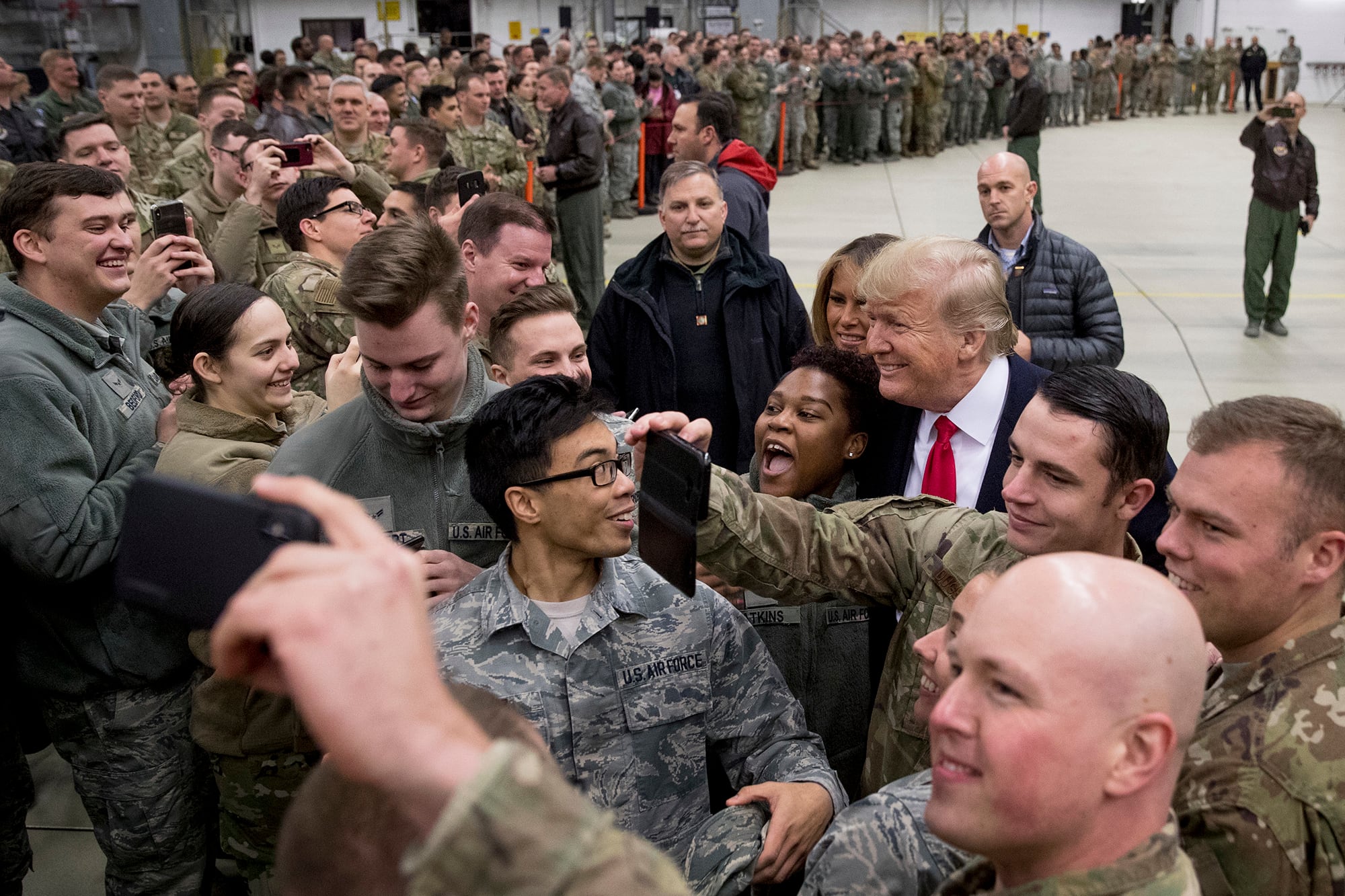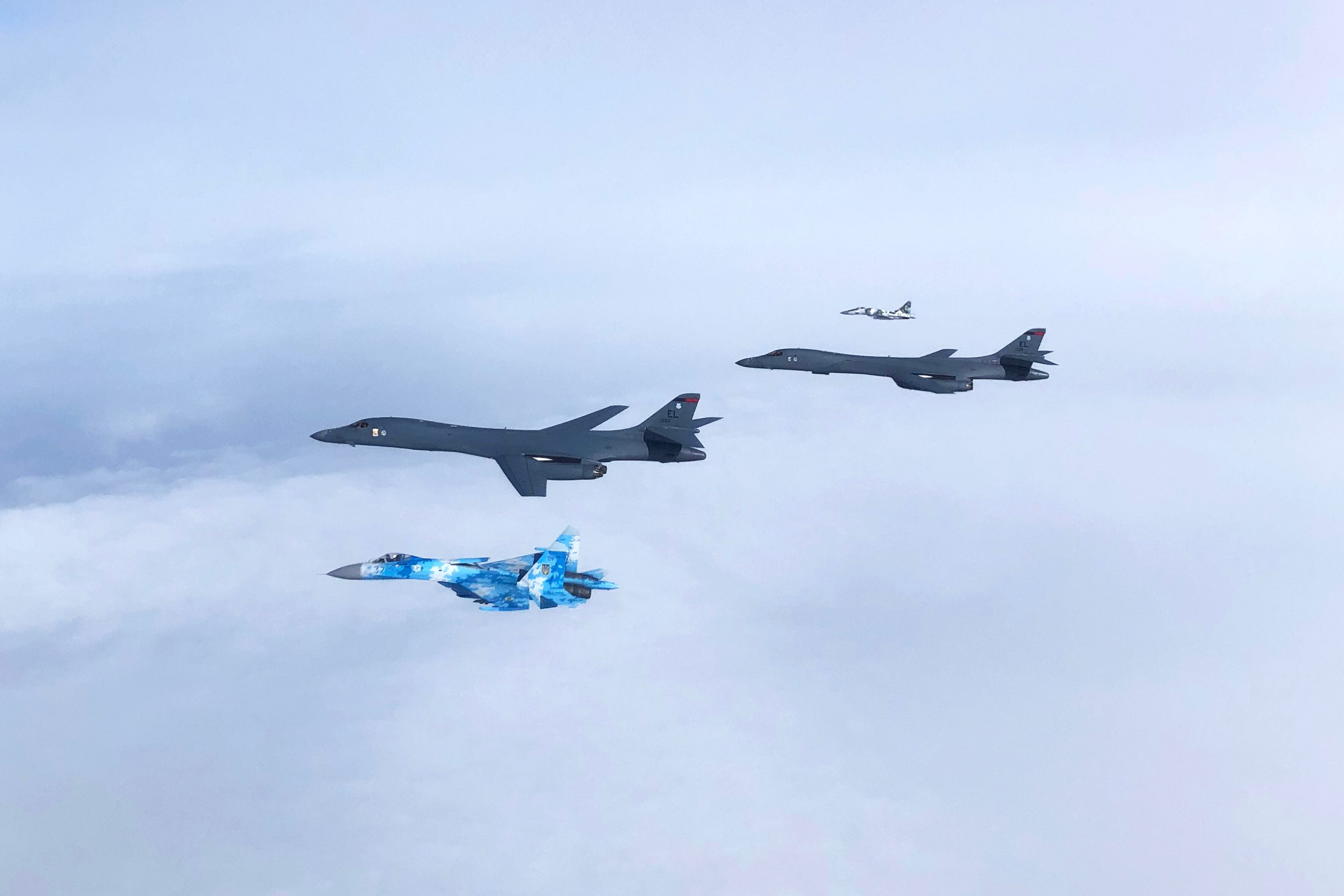WASHINGTON — On Tuesday night, U.S. Air Force F-22 jets scrambled to intercept two separate formations of Russian aircraft that included Tu-95 bombers, Su-35 fighter jets, and an A-50 airborne early warning and control aircraft, according to North American Aerospace Defense Command.
The encounter, which occurred in international airspace about 32 nautical miles from Alaska, came less than a week after a very similar encounter. F-22s from the North American Aerospace Defense Command intercepted a group of Russian bombers getting a little too close to Alaska for comfort. Though the two pairs of Tu-95 “Bear” bombers, and accompanying Russian aircraft, did not enter American airspace during the June 10 encounter, they entered the Alaskan air defense identification zone, NORAD said.
Russia released video showing what the encounter looked like from their pilots’ point of view.
On Monday the Russian Defence Ministry also posted a video of its Su-27 fighters intercepting an American B-52 bomber over the Baltic Sea during the annual Baltic Operations maritime exercise.
All three intercepts were routine, legal and safe. But those operations — and others like them that have occurred periodically over the past three months — are being used by the U.S. and Russian air forces to signal to each other that they remain ready to respond to threats and defend their airspace.
RELATED

Russia has not scaled back air operations in Europe since the start of the coronavirus pandemic, and the number of intercepts of Russian aircraft has remained roughly stable, Gen. Jeffrey Harrigian, commander of U.S. Air Forces in Europe and Air Forces Africa, told Defense News in an exclusive June 12 interview.
“I would quantify it as basically the same number [of intercepts] and types of activity,” he said. “Certainly COVID has taken an impact on their exercises. But broadly — when it comes to their response to the work that we’ve been doing in the Black Sea, in the Mediterranean, in the Baltics, in the High North — they continue to respond in terms of the numbers of intercepts that they’ve executed.”
The posture of the Russian Air Force, in some ways, mirrors that of its U.S. counterpart. Harrigian acknowledged that the pandemic had “some impact” to U.S. Air Force activity in Europe, particularly regarding training with NATO allies and other partner nations. However, those training events are ramping up, as partner nations lessen restrictions and the U.S. Air Force increasingly relies on virtual tools to brief and debrief pilots while maintaining social distancing, he said.
Harrigian also pointed to recent operations in Europe, such as bomber task force missions in May where U.S. Air Force B-1B bombers flew with military aircraft from Ukraine, Turkey, Poland and other nations.

“I believe there were some that expected our activity to be severely impacted by COVID,” Harrigian said. “And yet, if you were to look at the numbers and the locations … frankly, there’s been very little impact on those types of activities. And, in fact, I would offer in some cases it may have actually increased, as we’ve shown here over the last several weeks.”
Both politically and militarily, the COVID-19 pandemic has provided Russia and the United States yet another arena in which to compete.
Russia is home to the third-highest number of coronavirus cases, following the United States and Brazil. However, Russia’s 552,000 confirmed cases are only a quarter of the 2.1 million cases in the United States, according to Johns Hopkins University’s Center for Systems Science and Engineering. Russia’s death count from the virus is an even smaller fraction of the United States’ total — about 7,500 in Russia compared with about 117,000 in the U.S. — though the veracity of official Russian statistics is widely disputed.
On June 14, Russian President Vladimir Putin drew a direct comparison between how Russia and the United States responded to the virus. “We are working rather smoothly and emerging from this situation with the coronavirus confidently and with minimal losses,” he told state TV, according to Reuters. “But in the [United] States that is not happening.”
U.S. military and Defense Department officials have raised concerns that the ongoing pandemic could create openings for adversaries to exploit — whether through military means or economic ones.
In late May, U.S. Africa Command revealed that Russia deployed MiG-29 and Su-24s to Al Jufra air base in Libya. AFRICOM asserted that the aircraft — which was repainted to disguise their origin — would likely be used on behalf of the Wagner Group, a Russian-backed private military firm that is supporting the Libyan National Army’s fight against the Government of National Accord — the interim government of Libya that is supported by the United States and the United Nations.
Russia has denied the claims.
“The concern that we have at the strategic level,” Harrigian said, “is we’ve got to acknowledge the fact that the Russians have taken an approach very similar to what they did in Syria a couple years ago. Where they enter in with a paramilitary force — a surrogate, if you will — and that surrogate then lays inroads into that particular nation, and then ultimately puts them in a position to bring in further capabilities that can make access challenging, or give them access to a port or something that will drive strategic concerns for the southern flank of NATO.”
The U.S. continues to watch for movement by Russian assets, Harrigian said, but he noted that Russia’s posture hasn’t changed much since AFRICOM first revealed the fighter deployment.
“I think the Russians recognize they were exposed. … They were savvy to the point that they were caught in the act,” he said. “The bottom line is, we haven’t seen a whole lot of change since then.”
Valerie Insinna is Defense News' air warfare reporter. She previously worked the Navy/congressional beats for Defense Daily, which followed almost three years as a staff writer for National Defense Magazine. Prior to that, she worked as an editorial assistant for the Tokyo Shimbun’s Washington bureau.



